Soft Magnetic Powdery Sensor for Tactile Sensing
Abstract
1. Introduction
2. Materials and Methods
3. Experiments and Results
3.1. Evaluation of Hysteresis
3.2. Evaluation of Response for Controlled Force-Input
3.3. Evaluation of Response for a Pulsed Force
4. Discussion
4.1. Sensitivity of Soft-MPS
4.2. Response for a Pulsed Force
4.3. Model of Soft-MPS
4.4. Arrayed Soft-MPS
5. Conclusions
Author Contributions
Funding
Conflicts of Interest
References
- Kappassov, Z.; Corrales, J.A.; Perdereau, V. Tactile sensing in dexterous robot hands—Review. Robot. Auton. Syst. 2015, 74, 195–220. [Google Scholar] [CrossRef]
- Yousef, H.; Boukallel, M.; Althoefer, K. Tactile sensing for dexterous manipulation. Sens. Actuators A 2011, 167, 171–187. [Google Scholar] [CrossRef]
- Dahiya, R.S.; Metta, G.; Valle, M.; Sandini, G. Tactile sensing-from humans to humanoids. IEEE Trans. Robot. 2010, 26, 1–20. [Google Scholar] [CrossRef]
- Wang, Z.; Zi, B.; Wang, D.; Qian, J.; You, W.; Yu, L. External force self-sensing based on cable-tension disturbance observer for surgical robot end-effector. IEEE Sens. J. 2019, 19, 5274–5284. [Google Scholar] [CrossRef]
- Liu, X.; Zhao, F.; Ge, S.S.; Wu, Y.; Mei, X. End-effector force estimation for flexible-joint robots with global friction approximation using neural networks. IEEE Trans. Ind. Inform. 2019, 15, 1730–1741. [Google Scholar] [CrossRef]
- Wahrburg, A.; Bös, J.; Listmann, K.D.; Dai, F.; Matthias, B.; Ding, H. Motor-current-based estimation of cartesian contact forces and torques for robotic manipulators and its application to force control. IEEE Trans. Autom. Sci. Eng. 2018, 15, 879–886. [Google Scholar] [CrossRef]
- Viry, L.; Levi, A.; Totaro, M.; Mondini, A.; Mattoli, V.; Mazzolai, B.; Beccai, L. Flexible three-axial force sensor for soft and highly sensitive artificial touch. Adv. Mater. 2014, 26, 2659–2664. [Google Scholar] [CrossRef]
- Cheng, M.Y.; Huang, X.H.; Ma, C.W.; Yang, Y.J. A flexible capacitive tactile sensing array with floating electrodes. J. Micromech. Microeng. 2009, 19, 115001. [Google Scholar] [CrossRef]
- Maiolino, P.; Maggiali, M.; Cannata, G.; Metta, G.; Natale, L. A flexible and robust large scale capacitive tactile system for robots. IEEE Sens. J. 2013, 13, 3910–3917. [Google Scholar] [CrossRef]
- Guo, S.; Kato, Y.; Ito, H.; Mukai, T. Development of rubber-based flexible sensor sheet for care-related apparatus. SEI Tech. Rev. 2012, 75, 125–131. [Google Scholar]
- Ji, Z.; Zhu, H.; Liu, H.; Liu, N.; Chen, T.; Yang, Z.; Sun, L. The design and characterization of a flexible tactile sensing array for robot skin. Sensors 2016, 16, 2001. [Google Scholar] [CrossRef] [PubMed]
- Nakamoto, H.; Goka, M.; Takenawa, S.; Kida, Y. Development of tactile sensor using magnetic elements. In Proceedings of the IEEE Workshop Robotic Intelligence Informationally structured Space, Paris, France, 11–15 April 2011; pp. 37–42. [Google Scholar]
- Oh, S.; Jung, Y.; Kim, S.; Kim, S.-J.; Hu, X.; Lim, H.; Kim, C.-G. Remote tactile sensing system integrated with magnetic synapse. Sci. Rep. 2017, 7, 1–8. [Google Scholar] [CrossRef] [PubMed]
- Kawasetsu, T.; Horii, T.; Ishihara, H.; Asada, M. Mexican-hat-like response in a flexible tactile sensor using a magnetorheological elastomer. Sensors 2018, 18, 587. [Google Scholar] [CrossRef] [PubMed]
- Wang, H.; de Boer, G.; Kow, J.; Alazmani, A.; Ghajari, M.; Hewson, R.; Culmer, P. Design methodology for magnetic field-based soft tri-axis tactile sensors. Sensors 2016, 16, 1356. [Google Scholar] [CrossRef] [PubMed]
- Ito, Y.; Kim, Y.; Obinata, G. Contact region estimation based on a vision-based tactile sensor using a deformable touchpad. Sensors 2014, 14, 5805–5822. [Google Scholar] [CrossRef] [PubMed]
- Ferrier, N.J.; Brockett, R.W. Reconstructing the shape of a deformable membrane from image data. Int. J. Robot. Res. 2000, 19, 795–816. [Google Scholar] [CrossRef]
- Begej, S. Planar and finger-shaped optical tactile sensors for robotic applications. IEEE J. Robot. Autom. 1988, 4, 472–484. [Google Scholar] [CrossRef]
- Maekawa, H.; Tanie, K.; Komoriya, K.; Kaneko, M.; Horiguchi, C.; Sugawara, T. Development of a finger-shaped tactile sensor and its evaluation by active touch. In Proceedings of the IEEE International Conference Robotics Automation, Nice, France, 12–14 May 1992; pp. 1327–1334. [Google Scholar]
- Chuang, C.H.; Bin Dong, W.; Bin Lo, W. Flexible piezoelectric tactile sensor with structural electrodes array for shape recognition system. In Proceedings of the 3rd International Conference Sensing Technology, Tainan, Taiwan, 30 November–3 December 2008; pp. 504–507. [Google Scholar]
- Yu, P.; Liu, W.; Gu, C.; Cheng, X.; Fu, X. Flexible piezoelectric tactile sensor array for dynamic three-axis force measurement. Sensors 2016, 16, 6. [Google Scholar] [CrossRef]
- Park, Y.L.; Majidi, C.; Kramer, R.; Brard, P.; Wood, R.J. Hyperelastic pressure sensing with a liquid-embedded elastomer. J. Micromech. Microeng. 2010, 20, 125029–125035. [Google Scholar] [CrossRef]
- Engel, J.; Chen, J.; Liu, C. Development of polyimide flexible tactile sensor skin. J. Micromech. Microeng. 2003, 13, 359–366. [Google Scholar] [CrossRef]
- Shimojo, M.; Namiki, A.; Ishikawa, M.; Makino, R.; Mabuchi, K. A tactile sensor sheet using pressure conductive rubber with electrical-wires stitched method. IEEE Sens. J. 2004, 4, 589–596. [Google Scholar] [CrossRef]
- Shimojo, M.; Araki, T.; Ming, A.; Ishikawa, M. A high-speed mesh of tactile sensors fitting arbitrary surfaces. IEEE Sens. J. 2010, 10, 822–830. [Google Scholar] [CrossRef]
- Guo, C.; Kondo, Y.; Takai, C.; Fuji, M. Piezoresistivities of vapor-grown carbon fiber/silicone foams for tactile sensor applications. Polym. Int. 2017, 66, 418–427. [Google Scholar] [CrossRef]
- Shimada, K. Enhancement of MCF rubber utilizing electric and magnetic fields, and clarification of electrolytic polymerization. Sensors 2017, 17, 767. [Google Scholar] [CrossRef] [PubMed]
- Shimada, K.; Mochizuki, O.; Kubota, Y. The effect of particles on electrolytically polymerized thin natural mcf rubber for soft sensors installed in artificial skin. Sensors 2017, 17, 896. [Google Scholar] [CrossRef] [PubMed]
- Shimada, K.; Saga, N. Mechanical enhancement of sensitivity in natural rubber using electrolytic polymerization aided by a magnetic field and MCF for application in haptic sensors. Sensors 2016, 16, 1521. [Google Scholar] [CrossRef]
- Zheng, Y.; Shimada, K. Research on a haptic sensor made using MCF conductive rubber. J. Phys. Condens. Matter 2008, 20, 204148. [Google Scholar] [CrossRef]
- Nagahama, S.; Kimura, Y.; Kim, C.H.; Sugano, S. The development of magnetic powdery sensor. In Proceedings of the Proceedings IEEE Sensors 2014, Valencia, Spain, 2–5 November 2014; pp. 783–786. [Google Scholar]
- Reddy, J.N. Theory and Analysis of Elastic Plates and Shells; CRC Press: Boca Raton, FL, USA, 2006. [Google Scholar]
- Johnston, I.D.; McCluskey, D.K.; Tan, C.K.L.; Tracey, M.C. Mechanical characterization of bulk Sylgard 184 for microfluidics and microengineering. J. Micromech. Microeng. 2014, 24, 035017. [Google Scholar] [CrossRef]



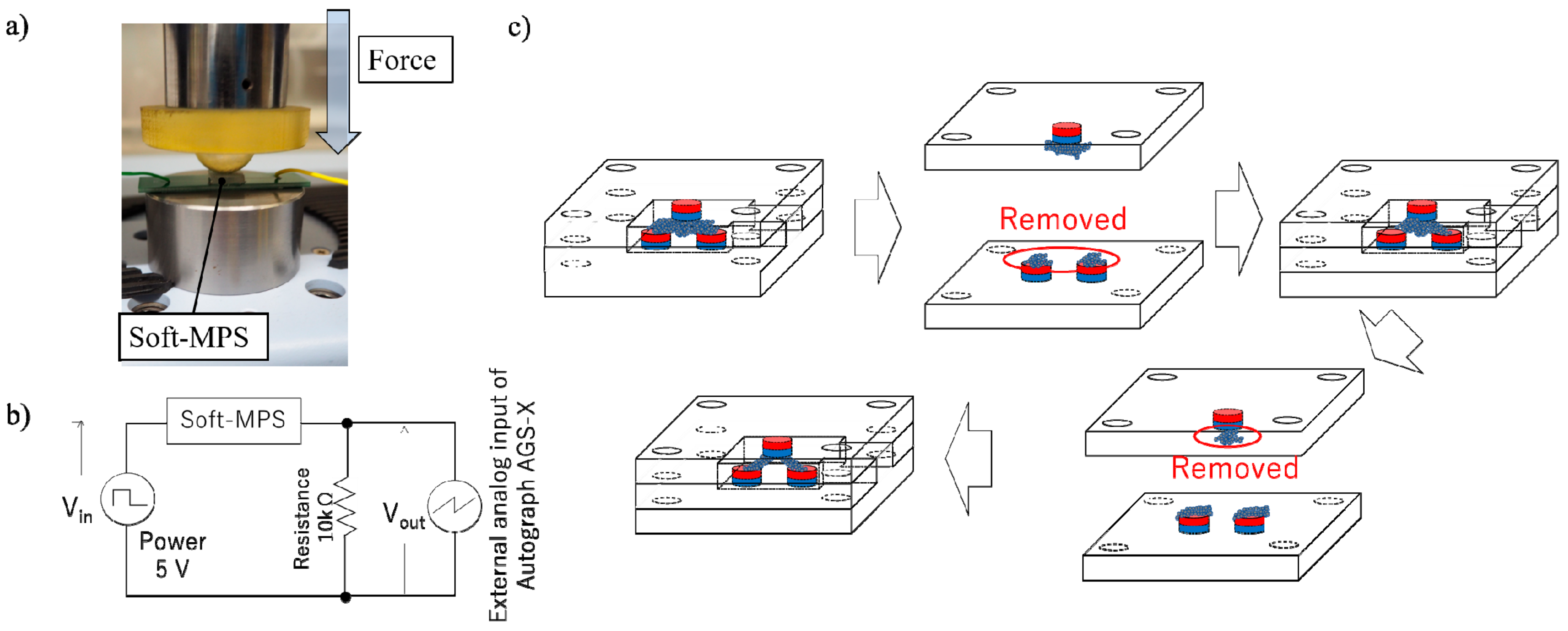
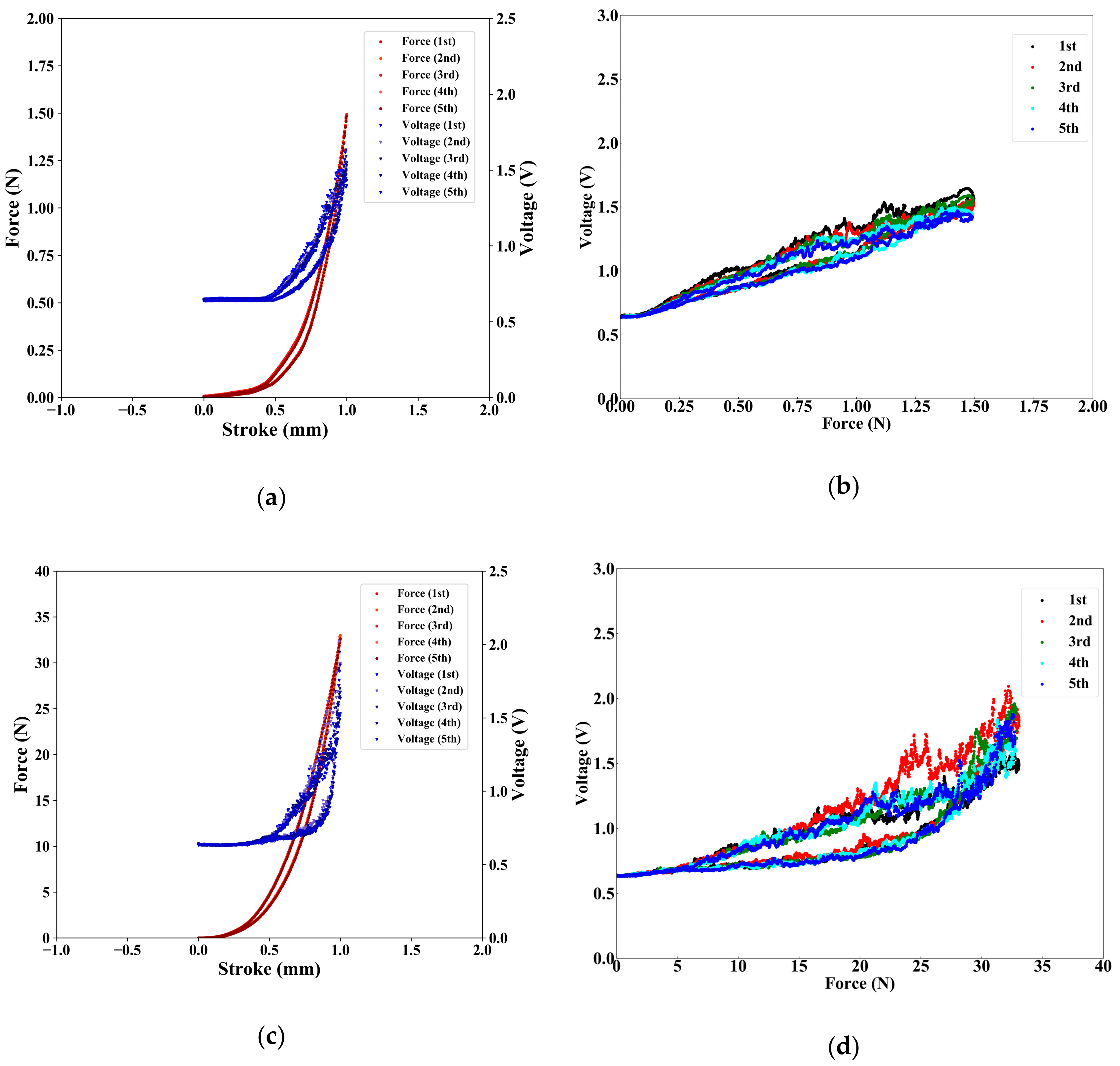


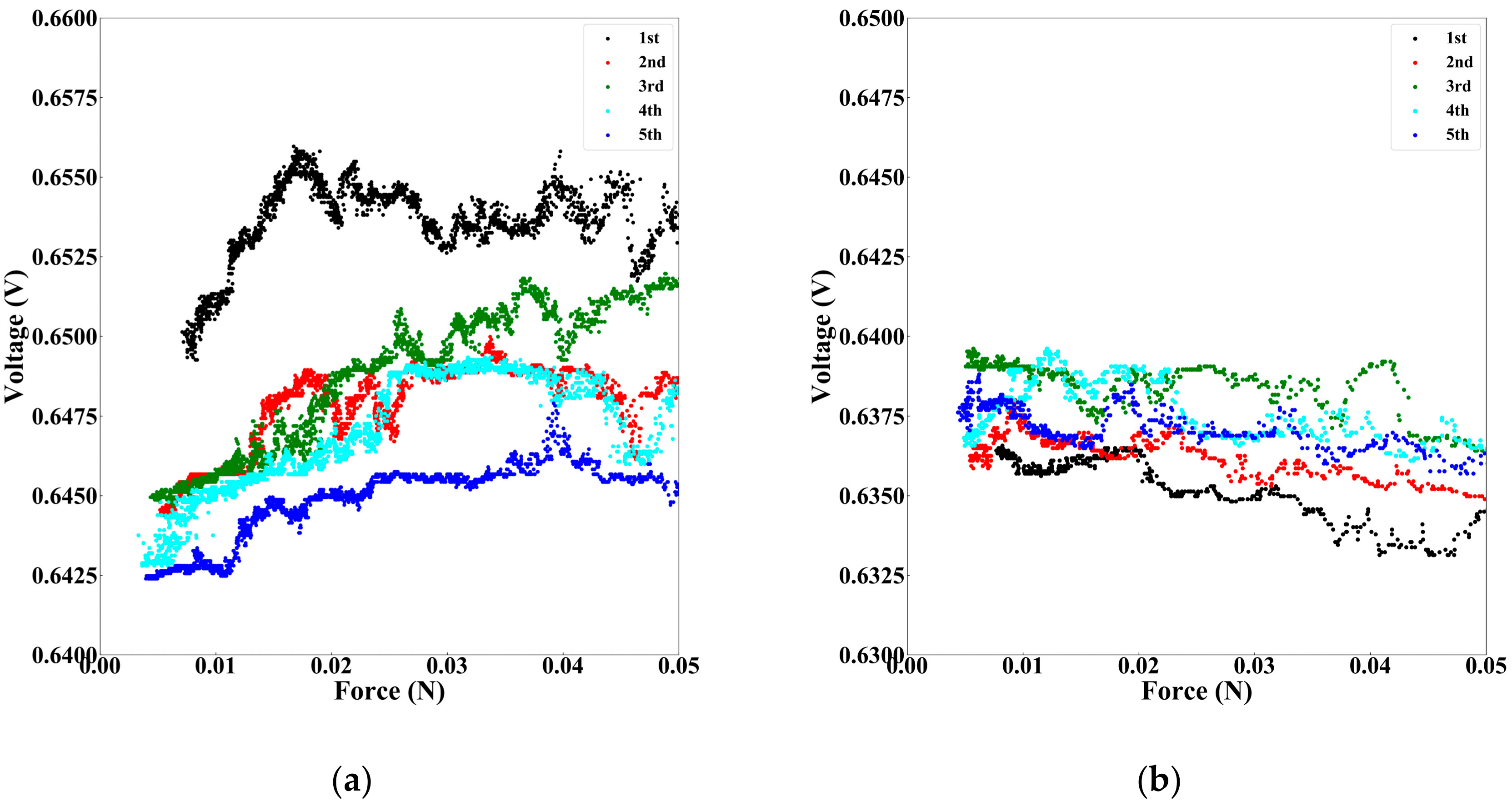
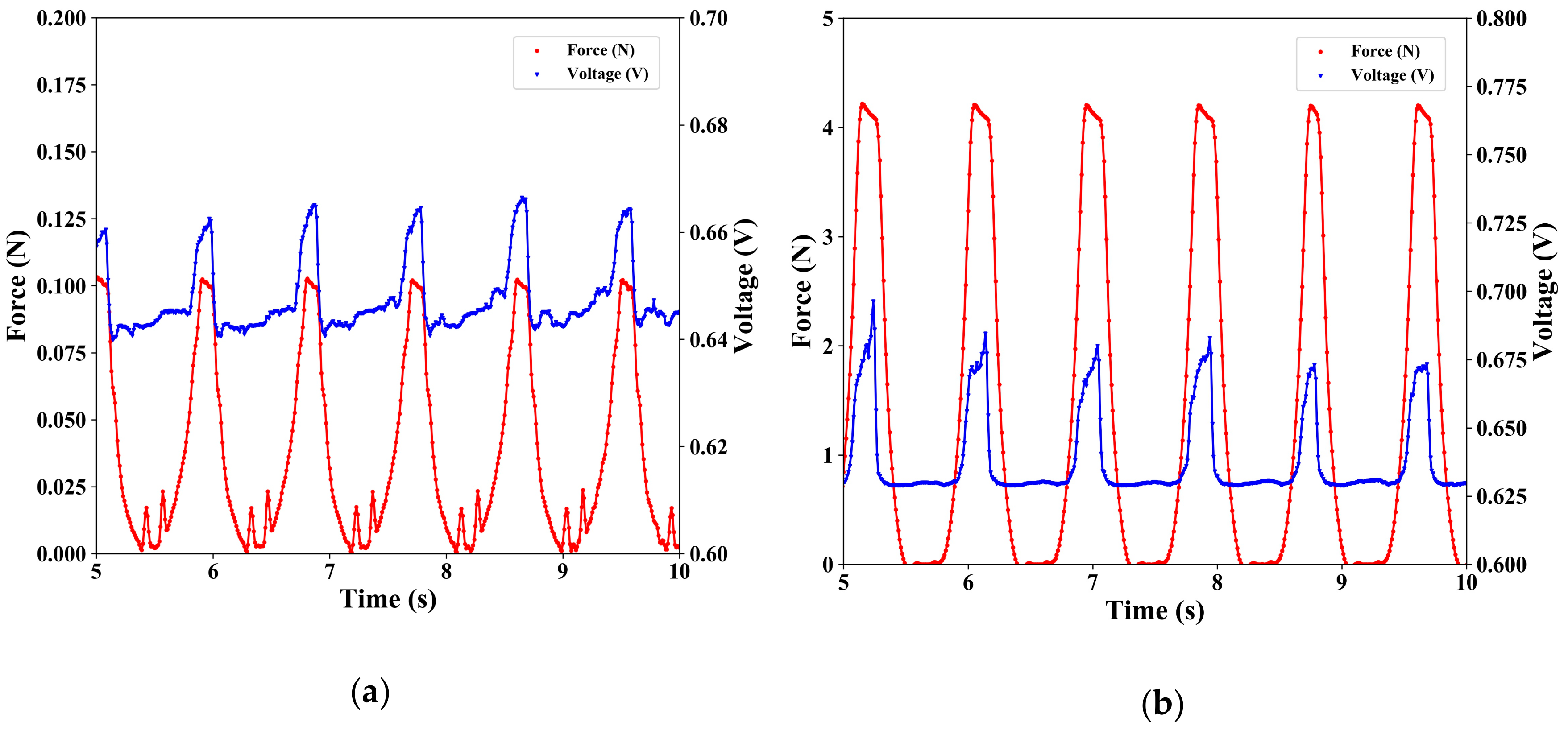
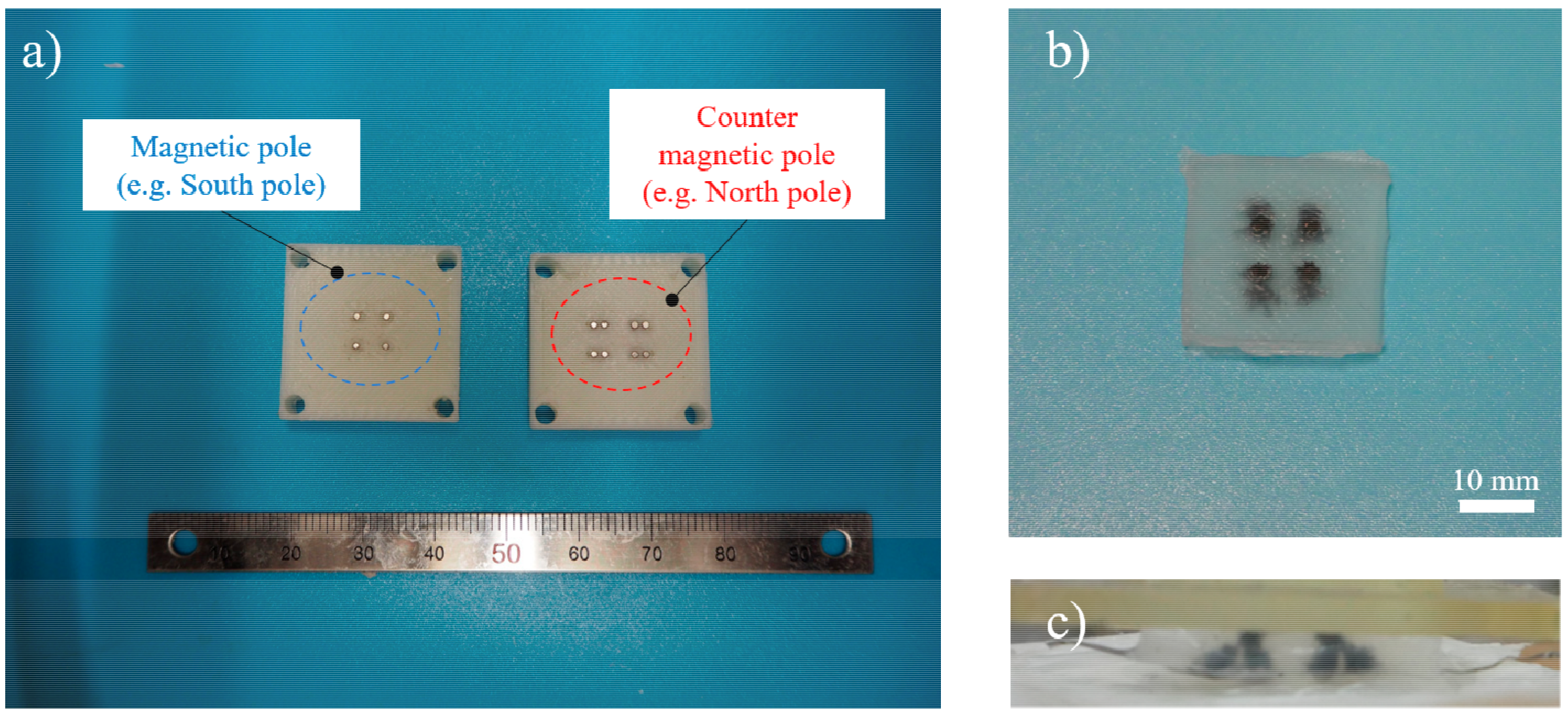
© 2019 by the authors. Licensee MDPI, Basel, Switzerland. This article is an open access article distributed under the terms and conditions of the Creative Commons Attribution (CC BY) license (http://creativecommons.org/licenses/by/4.0/).
Share and Cite
Nagahama, S.; Migita, K.; Sugano, S. Soft Magnetic Powdery Sensor for Tactile Sensing. Sensors 2019, 19, 2677. https://doi.org/10.3390/s19122677
Nagahama S, Migita K, Sugano S. Soft Magnetic Powdery Sensor for Tactile Sensing. Sensors. 2019; 19(12):2677. https://doi.org/10.3390/s19122677
Chicago/Turabian StyleNagahama, Shunsuke, Kayo Migita, and Shigeki Sugano. 2019. "Soft Magnetic Powdery Sensor for Tactile Sensing" Sensors 19, no. 12: 2677. https://doi.org/10.3390/s19122677
APA StyleNagahama, S., Migita, K., & Sugano, S. (2019). Soft Magnetic Powdery Sensor for Tactile Sensing. Sensors, 19(12), 2677. https://doi.org/10.3390/s19122677



